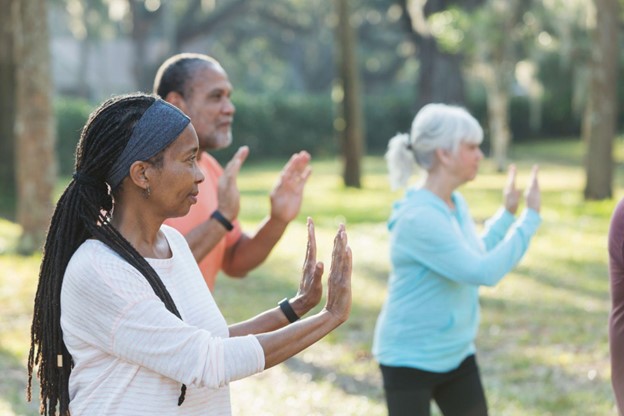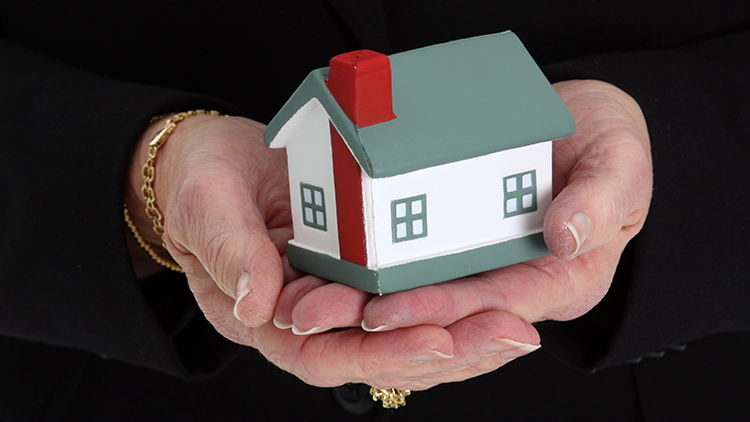Benefits of Doing Tai Chi for Seniors

Tai chi sounds exotic, but it’s actually a mainstream form of exercise. In fact, tai chi for seniors is one of the hottest trends in fitness. The simple reason is that it’s easy to master, and it has wonderful mental and physical benefits. The benefits of doing tai chi for seniors are numerous, including improved balance, strength, flexibility, and mental clarity, all of which are crucial for maintaining autonomy and preventing falls.
Tai chi originated in China thousands of years ago as a martial art, but it has since evolved into a practice resembling meditation, often called “meditation in motion.” It’s gentle on the body, making it ideal for seniors looking to stay engaged without putting stress on the joints.
Tai chi helps improve balance, strength, and flexibility, which are critical for preventing falls and maintaining a vibrant life. It also enhances mental clarity, reduces stress, and promotes a sense of calm and well-being. Studies show that tai chi can improve cardiovascular health, boost the immune system, and even alleviate symptoms of chronic conditions such as arthritis and osteoporosis.
The modern form of tai chi can be performed just about anywhere you have a little space to move around. Best of all, you don’t need any special equipment or clothing to do it. For optimal movement, it’s best to wear comfortable clothing like yoga pants or sweats, paired with flexible, supportive footwear such as athletic walking shoes instead of running shoes.
Tai Chi Explained
Tai chi includes a healthy portion of everything a senior’s mind and body needs. It’s great for improving balance, calming the emotions, promoting flexibility, working the core, and creating an overall feeling of senior wellness. The series of graceful, deliberate movements that make up tai chi have a meditative quality that help you focus on mindful breathing and connecting mind and body, all to elicit a sense of inner peace.
Unlike many other senior exercises, tai chi is accessible to individuals of all fitness levels and health conditions. The gentle movements, often beautifully named, can be adapted to suit various abilities, including:
- “White Crane Spreads its Wings” – A graceful motion that can be performed while seated or standing.
- “Seated Cloud Hands” – A fluid, calming movement that can be done from a wheelchair or with the support of a chair or walker.
These adaptable movements make tai chi an ideal exercise for seniors seeking to stay active, regardless of their mobility.
Beginners to the practice are encouraged to take classes to become familiar with the short form and long form movements. It’s very likely that you can find a tai chi class near you for seniors, but if you’re fortunate enough to live in one of the three Life Plan Communities in the Presbyterian Living group, you’ll be able to take advantage of free tai chi classes right on campus.
Tai chi for seniors typically focuses on short form movements, which are ideal because they tend to feature easier stances and slower movements to master. Of course, as you progress in skill and confidence, you can find online training videos that teach the more challenging long form movements.

Health Benefits of Tai Chi
Given its numerous advantages, it’s easy to see why tai chi remains increasingly popular. Doctors also recommend tai chi for seniors because of its many benefits that can improve quality of life when seniors practice regularly.
Practicing tai chi can improve balance because you shift your body weight into each new motion. These movements also enhance proprioception, the lesser-known sense that helps us perceive the position of our body in space. As we age, proprioception naturally declines, but practicing tai chi helps maintain and improve this crucial sense.
A study published in the Journal of the American Geriatrics Society found that practicing tai chi reduced the rate of falls by 43% over a short period of less than 12 months. Additionally, it observed a 50% decrease in falls that resulted in injuries. Those findings are supported by many other studies, including one conducted by the Emory University School of Medicine, which showed that tai chi classes help reduce falls by almost 50%.
Types of Tai Chi for Seniors To Explore
The beauty of tai chi is that there’s always something new to learn and master, and that’s exactly what senior minds and bodies need to flourish! Take a look at these tai chi forms that you can add to your routine:
- T’ai Chi Chih® Style – T’ai Chi Chih focuses on 20 slow and gentle rhythmic movements that improve balance, flexibility, and mental clarity, making it perfect for beginners and seniors. The movements are easy on the joints and emphasize cultivating internal energy, promoting relaxation and reducing stress.
- Wu Style – Known for its compact movements and subtle weight shifts, the Wu style includes 24 to 36 movements with a narrow stance and relaxed knees. It emphasizes proper alignment and smooth, continuous flow, making it ideal for those who have gained confidence and are ready to progress. This style improves stability, coordination, and body awareness.
- Yang Style – The widely practiced Yang style features 24 movements in a simplified form with a wider stance and bent knees, focusing on posture, relaxation, and coordinated breathing. It’s perfect for more experienced practitioners, enhancing leg strength, flexibility, and cardiovascular health while promoting mental focus and relaxation.
- Sun Style – This style of tai chi is characterized by its smooth and flowing movements that are gentle on the joints, making it an excellent option for seniors, especially those with arthritis or mobility challenges. The Sun style incorporates high, upright stances and emphasizes continuous movement, making it easier on the knees and back. It also features unique “open and close” hand movements, which add a meditative element to the practice, enhancing mindfulness and focus.
- Chen Style – Known as the oldest form of tai chi, the Chen style combines both slow and fast movements, as well as jumps, kicks, and powerful strikes, providing a dynamic and energizing workout. While it’s more complex and physically demanding, it’s perfect for seniors who are more advanced and looking to improve their strength, coordination, and cardiovascular health. This style can be modified for those who prefer to start slow, making it accessible yet challenging.
- Wu (Hao) Style – Less commonly practiced but still beneficial, the Hao style of tai chi emphasizes precise, small movements and careful attention to posture and alignment. This style focuses more on internal energy and control rather than large, sweeping motions, making it a fantastic choice for seniors interested in refining their tai chi technique and enhancing their mind-body connection.

Learn Tai Chi at Presbyterian Living
At Presbyterian Living, we prioritize whole-body health and wellness by offering diverse exercise classes tailored to seniors, including tai chi, yoga, gentle stretching, low-impact aerobics, and strength and balance training.
Available at our three Life Plan Communities near Chicago – The Moorings of Arlington Heights, Lake Forest Place, and Westminster Place – these programs are designed to enhance flexibility, balance, and overall well-being. Discover how our wellness offerings can enrich your life – find the closest community and schedule a tour today.



